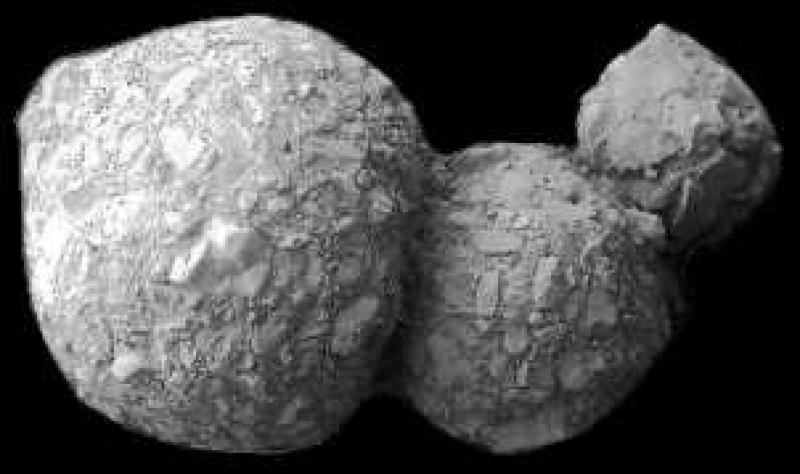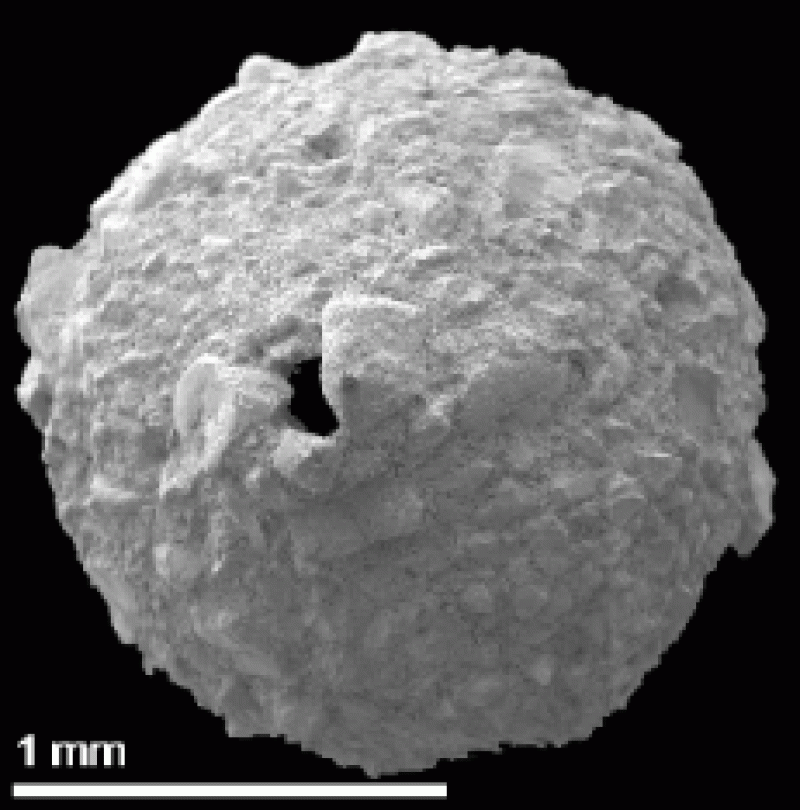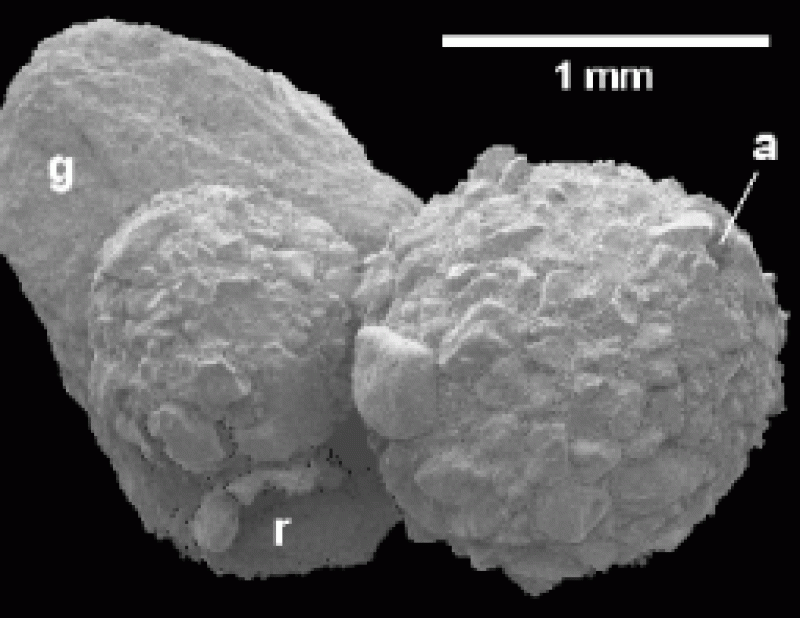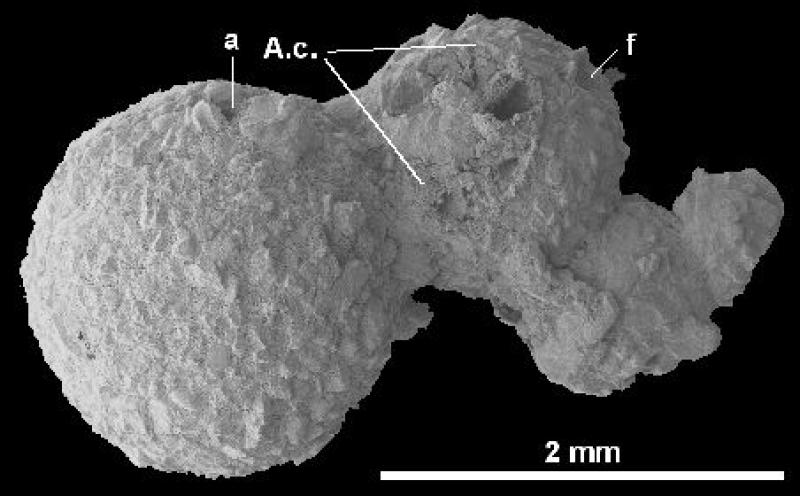Reophax pilulifer
Reophax pilulifer (Brady, 1884)
Hormosina pilulifera (Brady). Jones 1994, p 37 pl 30 figs 18-20.

- Multilocular specimen, side view
- Collected: Aug. 1995, N Kara Sea (St.Anna Trough), 530 mwd, modern mud

- Unilocular specimen, apertural view
- Collected: 16 Oct. 1987, N Barents Sea, 230 mwd, modern mud

- Two unilocular specimens encrusting a gravel; a - aperture, g - gravel, r - remnants of a third destroyed specimen
- Collected: 16 Oct. 1987, N Barents Sea, 230 mwd, modern mud

- An agglomerate of two bilocular specimens; a - aperture of the larger specimen; f -- foramen of the large specimen where broken-off earlier chambers were attached; A.c. – cross-section of an embedded Alvelophragmium crassimargo test
- Collected: 16 Oct. 1987, N Barents Sea, 230 mwd, modern mud
Remarks:
Distribution. On the Barents-Kara shelf this species is restricted to oligotrophic deep-water areas (200-600mwd) where the surface sediment consists of the so-called "brown mud" -- up to 40-cm-thick oxidized mud enriched in manganese oxides. Sand and gravel fractions of this sediment are mostly composed of R. pilulifer tests, predominantly dead.
Morphology. Test unilocular or multilocular. Chambers spherical; constrictions between chambers deep - 1/2 test width. Aperture single, roughly circular, on slightly projecting neck. Multilocular tests are up to 5 chambers increasing in size; axis irregularly twisted; aperture points any direction, typically at obtuse angle to test axis. Largest unilocular tests and largest ultimate chambers of multilocular tests average 2 mm in diameter, max 3.5 mm. Wall thickness 0.10-0.25mm, increases with chamber size. Test wall robust, consists of poorly sorted mineral grains hold by small amount of cement; dimensions of larger grains match wall thickness; no selectivity for mineral types observed; often encrusts coarse debris (gravel and small pebbles). Embedded foraminiferal tests are common and picked selectively: only Alvelophragmium crassimargo, Cribrostomoides subglobosus and conspecific specimens (Rose Bengal stained A.crassimargo and C.subglobosus observed). In multilocular specimens the cytoplasm, if present, occupies but the ultimate chamber; foramen sealed with a matrix.
Feeding mode unknown; cytoplasmic trunks sometimes seen emanating from aperture; as there are no structures to support seston-filtering pseudopodia, the feeding network is probably spread in/on the sediment.
Taxonomy. The species has been obviously misidentified in the Barents-Kara region for Hormosina globulifera. The morphology of the form from the Barents-Kara shelf matches well Brady's description of Reophax pilulifer, and this identification has been confirmed by C. Schoeder-Adams. However, the morphological variability of the species provides sound evidence that it is not a hormosinid -- rather a saccamminid:
- Among adult-sized specimens, unilocular tests with no connection to earlier growth stages are at least as frequent as multilocular tests. This indicates that the ontogenesis includes a naked stage, similar to those known in other primitive large arenaceous foraminifers.
- In multilocular specimens the cytoplasm, if present, occupies the ultimate chamber only.
- When a multilocular test consists of three chambers, their arrangement has only two degrees of freedom and therefore the test axis is bent in one plane, thus matching the slightly curved axis of Reophax. However, when the test consists of more than three chambers (and the joints have more than two degrees of freedom), the axis is curved out of plane, that is, the morphology does not fit the diagnosis for the genus Reophax. The aperture, often displaced from the test apex, further breaks the symmetry of the test, which is not the case for Reophax.
Our interpretation of the morphology is that R. pilulifer is in fact unilocular, whereas tests of several chambers are pseudo-multilocular. As a specimen grows, it abandons the old test, migrates some distance as a naked rhizopod, and builds a new, larger unilocular test. If its own old test or other empty R. pilulifer tests are within reach, they are inbuilt in the new test as foreign objects. The result of such a growth event, repeated several times, is either a shapeless agglomerate or a nicely arranged series of subsequently larger spheres. The latter may look like a Reophax or Hormosina.
